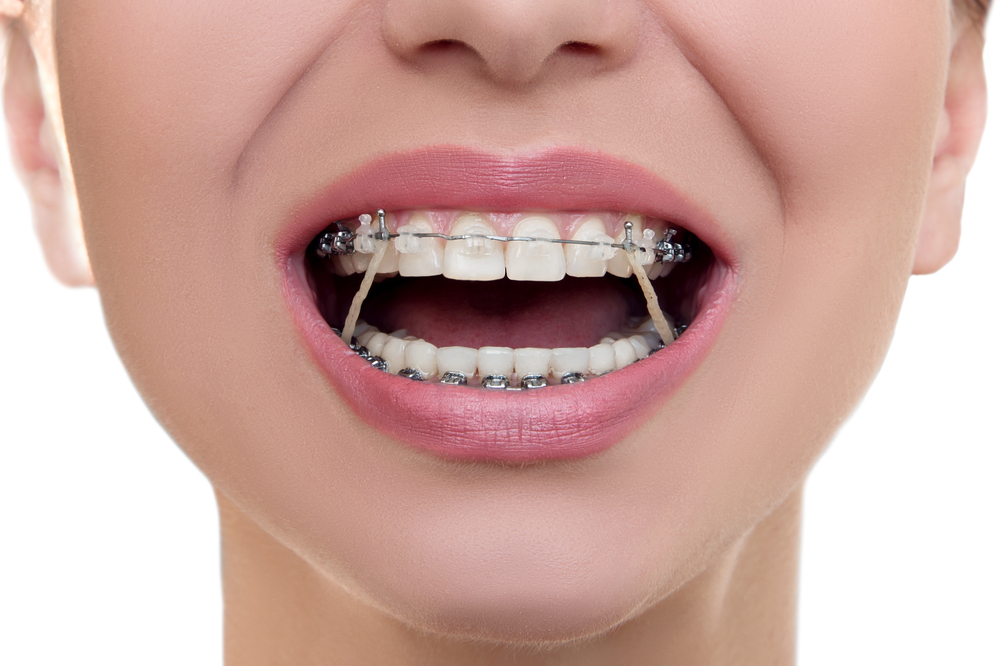How Cumming Orthodontics Addresses Common Braces and Invisalign Concerns
How Cumming Orthodontics Addresses Common Braces and Invisalign Concerns
Blog Article
Comprehensive Guide to Orthodontics Procedures for Dealing With Oral Imbalances
Recognizing the intricacies of each treatment, including their mechanisms, benefits, and possible downsides, is critical in making notified decisions about one's orthodontic treatment. As we browse through the detailed guide to orthodontic treatments for fixing oral misalignments, the complex information of each method will certainly unravel, losing light on the path towards a practical and unified dental positioning.
Orthodontic Procedures Review

Along with standard dental braces and clear aligners, orthodontists might also suggest various other treatments like headgear, palatal expanders, or retainers to attend to particular placement concerns (orthodontist). These procedures are tailored per patient's one-of-a-kind demands and may include a combination of therapies to attain the desired results. Regular adjustments and monitoring are essential parts of orthodontic therapy to make sure progress is on track and to make any necessary alterations along the method. By undergoing orthodontic treatments, patients can not only achieve a straighter grin yet likewise boost their general oral health and wellness and function.
Traditional Dental Braces: How They Work
When thinking about orthodontic therapies for oral imbalances, traditional dental braces stand out as a reliable method for fixing teeth placing. Typical dental braces contain brackets, wires, and bands that interact to use continual stress on the teeth, progressively relocating them into the desired alignment. The brackets are connected to the teeth utilizing an unique adhesive, and the cables are threaded via the braces. By readjusting the stress of the cords, orthodontists can regulate the instructions and pressure put on each tooth, leading them right into correct alignment over time.
As stress is used to the teeth through the dental braces, the bone surrounding the teeth is improved to support the new tooth settings. Patients will need regular modifications at the orthodontist's office to guarantee the braces continue to use the appropriate pressure for effective teeth motion.
Unnoticeable Aligners: Cons and pros
These clear, customized trays are basically unnoticeable when used, making them an enticing alternative for individuals seeking a much more cosmetically pleasing orthodontic treatment. People can eliminate the aligners prior to consuming or brushing their teeth, decreasing the risk of food getting stuck in the home appliance and simplifying the cleaning process.

Surgical Orthodontic Options
Surgical treatments in orthodontics present practical options for resolving complex oral misalignments that may not be effectively fixed through conventional orthodontic therapies. While conventional dental braces and unnoticeable aligners can get more fix several orthodontic problems, particular cases need medical intervention to attain optimal outcomes. Surgical orthodontic alternatives are usually advised for severe malocclusions, substantial jaw discrepancies, and situations where the underlying bone framework needs adjustment to attain proper positioning.
One usual medical orthodontic procedure is orthognathic surgery, which includes rearranging the jaws to remedy practical problems such as problem chewing or talking. This surgical treatment is frequently done in cooperation with an orthodontist that helps align the teeth before and after the treatment. Surgical orthodontics might additionally entail procedures to reveal influenced teeth, eliminate excess periodontal cells, or improve the jawbone to develop an extra unified face account.
Prior to considering medical orthodontic options, patients undergo an extensive assessment to identify the need and possible advantages of such treatments. braces. While surgery might appear daunting, it can significantly improve both the feature and visual appeals of the smile in cases where conventional orthodontic treatments drop short
Retainers and Post-Treatment Treatment

Failing to comply with post-treatment treatment instructions can result in relapse, where the teeth gradually move back towards their original settings. Regular retainer wear, great dental health, and routine dental examinations are important for keeping the results accomplished through orthodontic surgical treatment and ensuring the long-term stability of the dealt with oral alignment.
Final Thought
In verdict, orthodontic treatments offer various options for fixing dental imbalances. Surgical orthodontic alternatives are readily available for extra extreme helpful hints imbalances. On the whole, orthodontic treatments can properly boost oral wellness and aesthetic appearance.
As we navigate through the extensive guide to orthodontic procedures for correcting oral imbalances, the intricate details of each method will unravel, losing light on the course toward a practical and harmonious dental placement. - braces
One of the most common orthodontic therapies is the usage of braces, which consist of steel brackets and wires that apply mild stress to slowly shift teeth into the wanted placement.When thinking about orthodontic treatments for dental misalignments, traditional dental braces stand out as a tried and true method for correcting teeth placing. Furthermore, invisible aligners might not be appropriate for complex orthodontic concerns that need even more considerable teeth movement, as they are typically advised for moderate to modest situations. Retainers are customized orthodontic tools created to hold teeth in their fixed positions after the conclusion of orthodontic treatment.
Report this page